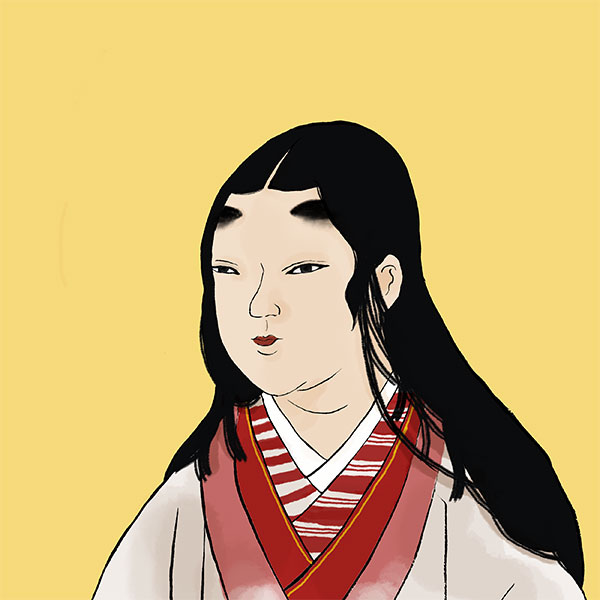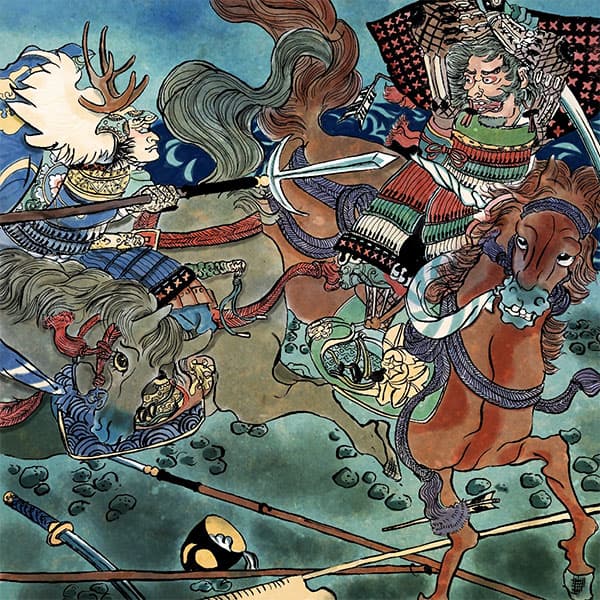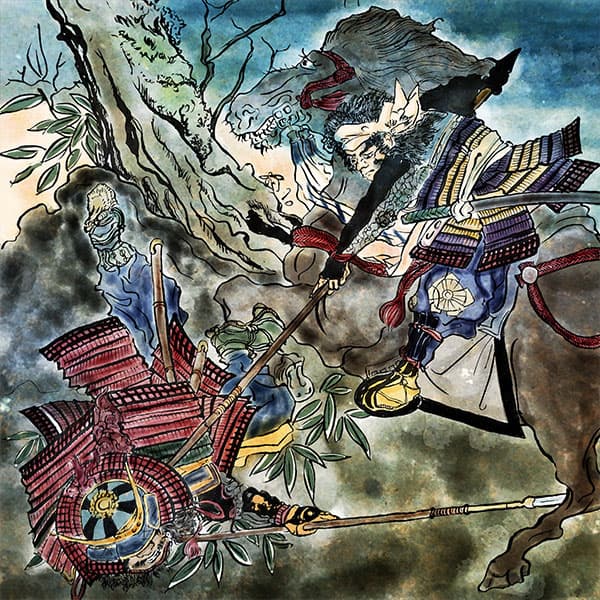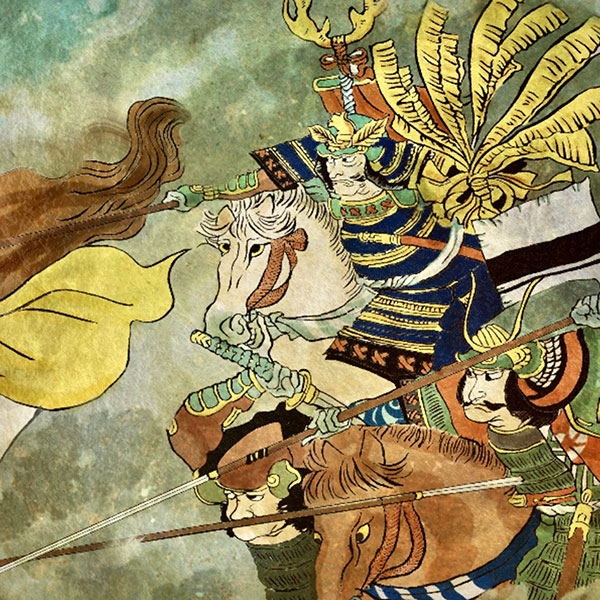City people (1/2)A beautiful woman representing the Sengoku period

City people
- Article category
- biography
- name
- City people (1547-1583)
- place of birth
- Aichi prefecture
- Related castles, temples and shrines

Ichijodani Asakura Residence
- related incident
During the Sengoku period, political marriages between feudal lords, lords, and vassals functioned as an important diplomatic policy. In particular, there were many eldest sons and daughters of neighboring feudal lords, such as Kicho, the daughter of Nobunaga Oda and Dosan Saito, and Tokuhime, the daughter of Nobuyasu Matsudaira (the eldest son of Ieyasu Tokugawa) and Nobunaga. Oichi, who was born as Nobunaga's younger sister, also lived a turbulent life, marrying as a political marriage, experiencing the fall of a castle due to her husband's betrayal, and finally committing suicide.
Birth and first half of life
There are several aliases for the city.
It is also called ``Kotari-no-kata'' or ``Kotani-dono'' because it was the successor room of Azai Nagamasa, who later married her. As for her name, the popular theory is that it is ``Oichi'' and that she is also called ``Oichihime'' (Oichi Goryonin), but in the ``Oda Family Genealogy'' included in the ``Kokurui Collection,'' it is ``Hideko.'' '', but in this article we will refer to it as ``Oichi-no-kata''.
In fact, there are very few records about the first half of his life, so there are many unknowns.
The current situation is that his real name is not certain, as it is not particularly found in primary historical sources. Regarding his year of birth, according to a popular theory, he was born in the 16th year of Tenbun (1547) within Owari Nagono Castle.
She was Oda Nobunaga's younger sister (or some say her cousin), and is said to have been 13 years old with Nobunaga. The identity of her parents is also unclear, and the current mainstream theory is that her father is Nobuhide Oda, and if this is true, she would be the fifth daughter. It is said that her mother was Tsuchida Gozen, but it is unclear as there is a possibility that she is different. If Tsuchida Gozen was the biological mother, not only Nobunaga but also Nobuyuki, Hidetaka, and Inu would be siblings from the same litter.
Marriage with Nagamasa Asai
There are several theories about when Oichi and Nagamasa Asai are said to have gotten married. Previously, it was thought that it was in the 7th year of Eiroku, but in December of the 8th year of the same year, ``Wada Koremasa, who was ordered by Rokkaku Shotei, worked hard to bring together the Oda and Azai families, but he was unable to obtain Nagamasa's approval. There is also a story that the next opportunity was in September 1567 (1567), or early in 1568 (January to March). Masu.
At this time, in September of the same year, Nagamasa's side is said to have hurriedly asked Nobunaga for an alliance through Nagatoshi Ichihashi, the lord of Mino Fukuzuka Castle, and this marriage agreement was concluded, and as a result, Oichi offered Nagamasa Asai a favor. It has become.
Through this marriage, the Oda family and the Asai family formed an alliance. Furthermore, around the same time, Nagamasa was engaged to the daughter of Sadatake Hirai, a vassal of Rokkaku, his master's family, but the marriage broke off due to her marriage to Oichi.
Afterwards, Nagamasa and Oichi had three daughters. (Later Yodo-kun, Ohatsu, and Oe-no-kami) It is known that Nagamasa already had at least two sons during this period, but it is thought that neither of them were children he had with O-ichi. Masu.
Breakdown of the alliance and the fall of Odari Castle
In 1570, Nobunaga attacked Asakura Yoshikage of Echizen Province (Fukui Prefecture), who had close ties with the Asai clan, and the friendly relations between the Asai and Oda clans were severed.
It is said that the Asai family had a conflict between choosing between the Asakura family and the Oda family, but in the end they chose the Asakura family.
Although the friendship between the Asai family and the Oda family broke down, it is said that Nagamasa and Oichi were on good terms as husband and wife, although they were married.
From around the 13th Eiroku era, the Oda family and the Asai family began to conflict, and even when tensions arose, the couple seemed to have been on good terms since they gave birth to a daughter. Regarding Noe, there are historical materials that dispute the theory that Kotani was born.
In the ``Azuchi Founding Record'' (held by Hoza Bunko), which was compiled in 1679, it is said that Ichi and his two daughters escaped from Odari Castle, and that Oichi gave birth to Oe in Gifu. remain.
After Nagamasa was defeated at the Battle of Anegawa, Odari Castle fell in 1573, and Nagamasa and his father Hisamasa were also defeated by Nobunaga and committed suicide.
Oichi and his three daughters Chacha, Hatsu, and Eyo were rescued by Eikatsu Fujikake and taken in by the Oda family.
After that, the conventional theory is that Oichi and the three sisters were entrusted to the care of Nobukae, the older brother of Iga Province, and received protection, but recent research results show that Oichi and the three sisters were protected by Nobukae. There is also a theory that he was not under the protection of Oda, but was entrusted to Shinji Oda, the lord of Moriyama Castle in Owari Province and Nobunaga's uncle. After Shinji Oda was killed in battle on September 29, 2016, he moved to Nobunaga's Gifu Castle.
Battle of Anegawa
When Oda Nobunaga went to Kyoto with Yoshiaki Ashikaga as his banner, he called on the feudal lords and people around the Kinai region to gather in Kyoto, using service to the Emperor and Shogun as a good cause.
In April of the first year of Genki (1570), Nobunaga led his army and marched under the pretext of subjugating the Wakasa Muto clan (in reality, it was an invasion of Asakura Yoshikage's territory of Echizen), but the Asai clan of Kita-Omi, who had an alliance with him, was defeated by the Asakura clan. Join us.
Attack the rear of the Oda army. Nobunaga, who was outnumbered and in danger of being pincered, retreated. His vassals also retreated through the ``Kanegasaki retreat''.
Nobunaga returns to Kyoto, rebuilds his army, and prepares for a counterattack. Yoshikage Asakura remained in Tsuruga, and on May 11, he advanced a large army led by Keikyo Asakura to Omi. The Asakura army and the Azai army advanced to southern Omi and collaborated with Rokkaku Yoshikata to attempt a pincer attack on Nobunaga, but this collaboration failed. Nobunaga returned to Gifu on May 21 after crossing Chigusa. On June 4th, the Rokkaku Army was defeated by Katsuie Shibata and Nobumori Sakuma at the Battle of Yasukawara. On June 21, Nobunaga set up camp on Mt. Tora Gozen, and using Mori Yoshinari, Sakai Masanao, Saito Toshiharu, Shibata Katsuie, Sakuma Nobumori, Hachiya Yoritaka, Kinoshita Hideyoshi, Niwa Nagahide, and others, he spread across the castle town of Odari Castle. To burn down. On June 24th, Nobunaga laid siege to Yokoyama Castle, which was located to the south across the Anegawa River from Odari Castle, and Nobunaga himself encamped at Ryugahana.
Here Tokugawa Ieyasu joined the Oda army. Meanwhile, 8,000 reinforcements led by Kageken Asakura arrived on the Asai side. The Asakura forces set up camp on Mt. Oiyama, east of Odari Castle. Nagamasa Azai's 5,000 soldiers were added to this, bringing the combined forces of Azai and Asakura to 13,000, but in the early hours of June 28, in front of Anegawa, the army was divided into two groups and set up in Nomura and Mita Village. On the other hand, the Tokugawa forces head to the west to fight the Mitamura forces, while the Nomura forces to the east include Nobunaga's horse mawari and the West Mino Sannin (Yoshimichi Inaba, Bokuzen Ujiie, Morinari Ando). I headed over.
As a result, the Asakura army was routed first, followed by the Asai army. It was a victory for the Oda-Tokugawa allied forces. Place names such as ``Ketsuhara'' and ``Ketsukawa'' still remain around the battle site, which are said to give a glimpse of the fierce battles at the time.
Nobunaga pursued them to a distance of about 50 towns from Odari Castle and set fire to houses at the foot of the mountain, but he thought it would be difficult to take Odari Castle all at once and retreated to Yokoyama Castle. Shortly thereafter, Yokoyama Castle surrendered, and Nobunaga placed Hideyoshi Kinoshita (later Hideyoshi Toyotomi) in charge of the castle.
After Oda Nobunaga's death
In the 10th year of Tensho (1582) after Nobunaga's death, Katsuie Shibata and Hideyoshi Hashiba held the Kiyosu Conference to decide on a successor after Nobunaga's death. One theory is that Hideyoshi preferred Oichi at this time, but in the end he ended up remarrying Katsuie Shibata.
- related incident

- WriterTomoyo Hazuki(Writer)I have loved history and geography since my student days, and have enjoyed visiting historical sites, temples and shrines, and researching ancient documents. He is especially strong in medieval Japanese history and European history in world history, and has read a wide range of things, including primary sources and historical entertainment novels. There are so many favorite military commanders and castles that I can't name them, but I especially like Hisashi Matsunaga and Mitsuhide Akechi, and when it comes to castles, I like Hikone Castle and Fushimi Castle. Once you start talking about the lives of warlords and the history of castles, there's a side of you that can't stop talking about them.






